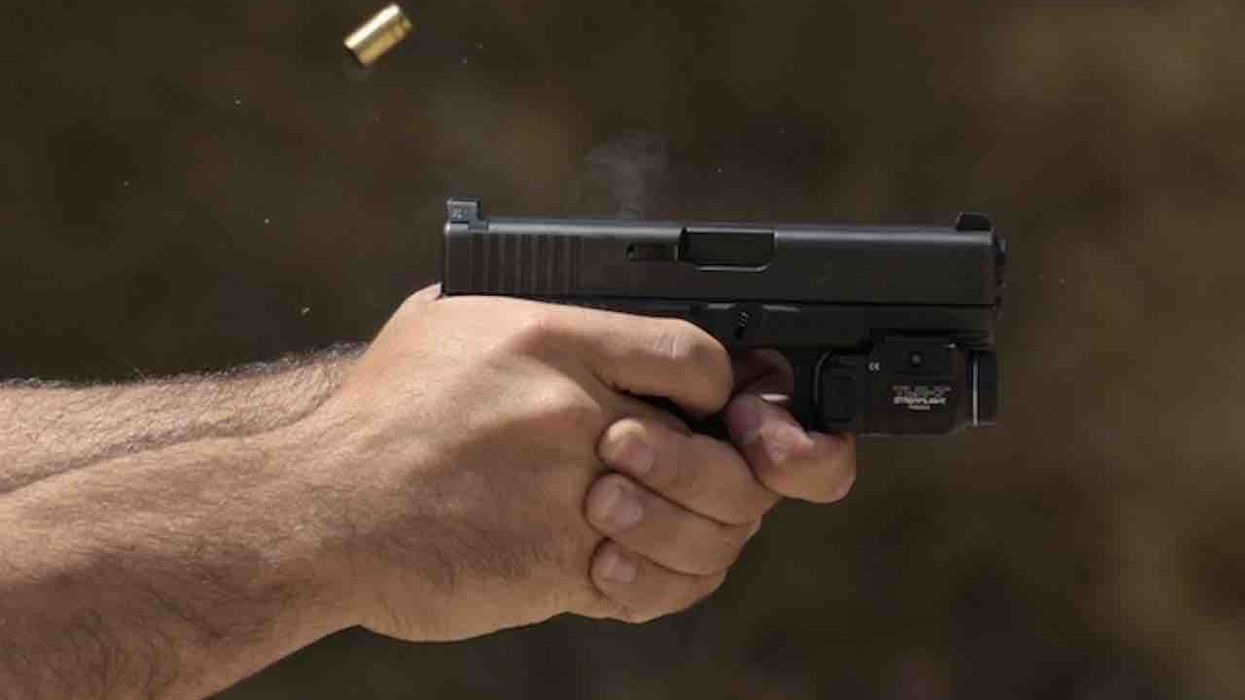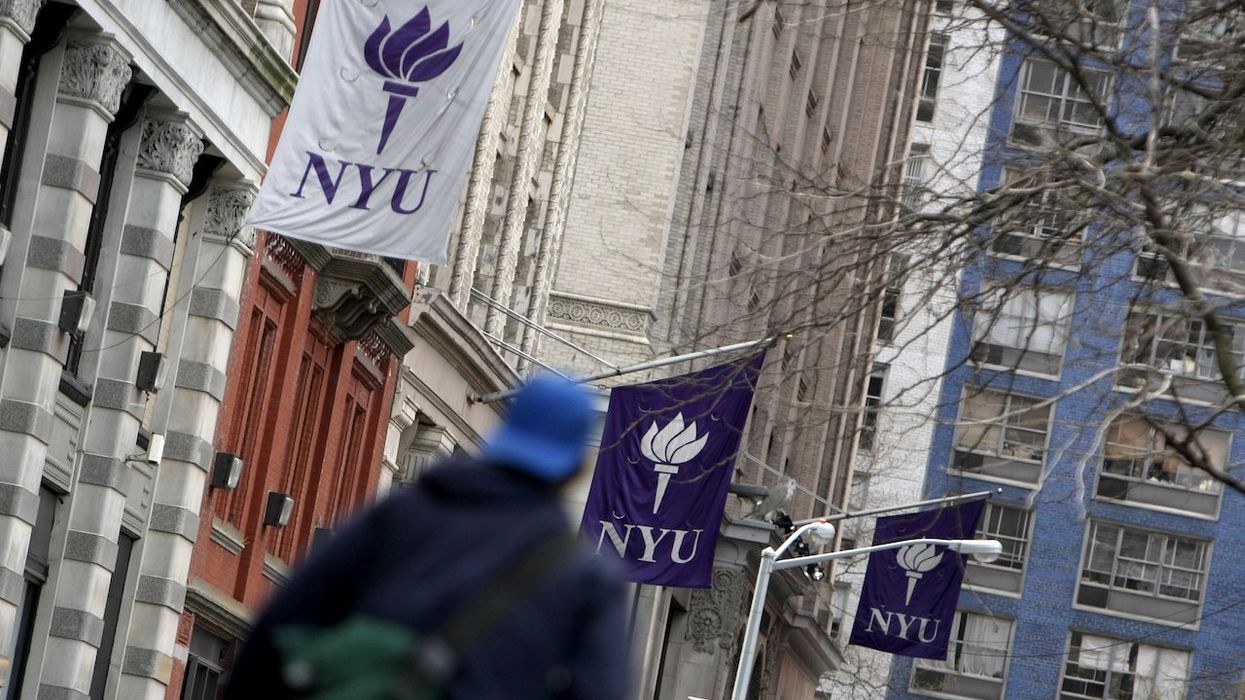
© 2024 Blaze Media LLC. All rights reserved.
Wars of Christmas Past: A Look at How the American Military Has Celebrated the Season in Times of War
December 20, 2012
Christmas has provided a dramatic punctuation to wars and conflicts throughout American history going back to the War of Independence.
 Dec. 24, 2010: A U.S. soldier carries a candle to light those of his colleagues during a ceremony on the eve of Christmas at the U.S. base of Camp Phoenix in Kabul, Afghanistan. (AP)
Dec. 24, 2010: A U.S. soldier carries a candle to light those of his colleagues during a ceremony on the eve of Christmas at the U.S. base of Camp Phoenix in Kabul, Afghanistan. (AP)
“Come out here, we’ve got something to show you.” It was Christmas Eve of 2003 on a base near the dusty town of Tal Afar, Iraq. I was being roused from a jet lag-fueled coma-like sleep by the colonel leading a brigade of the US Army’s 101st Airborne Division. He motioned me outside where a group of soldiers waited expectantly. The colonel nodded and then beamed a smile as bright as the floodlight that now illuminated a perfectly formed, fifteen foot Christmas tree. It was unadorned with any tinsel or ornaments but the sturdy relic of the forest with its rich verdant color stood in stunning contrast to the barren monochromatic brown landscape of dirt and mud that surrounded it.
“Sir, where did you find a Christmas tree in Iraq?” I blurted out.
I was there as an embedded writer, but my question reflected more my child-like wonder –- this was no Charlie Brown Christmas tree! -- than any attempt at investigative journalism. The colonel’s eyes twinkled like Santa himself and his smile transformed into a lopsided grin. “Syria,” he responded with mischievous delight. I assumed he was teasing, perhaps he had dispatched one of our translators to the border, just fifteen miles away, to purchase this wonder. But the image of a Blackhawk helicopter stealthily speeding back across the border with an evergreen “liberated” from a Syrian mountainside, in a kind of Black Ops version of Santa on his annual trek, was too wonderful not to indulge for a few delicious seconds.
 Image from Michael Keane during his time embedded in Iraq (Photo: Michael Keane)
Image from Michael Keane during his time embedded in Iraq (Photo: Michael Keane)
Christmas has provided a dramatic punctuation to wars and conflicts throughout American history going back to the War of Independence. In December 1776 George Washington faced a desperate situation. At the end of the year the enlistments of many of his troops were expiring, and, in fact, many men had already deserted, demoralized by the retreat from New York, pay that was miserable and intermittent, and the harsh Winter weather. On Christmas morning Washington ordered his army to prepare food supplies for three days, and every soldier was outfitted with fresh flint for their muskets. That evening Washington led his troops across the icy Delaware River where they attacked the Hessian outpost at Trenton. The enemy, sated and fast asleep after their Christmas feast, was easily routed. Washington’s army captured a thousand prisoners while suffering few casualties, and the American revolution received a critical boost in terms of morale and enlistments.
During the Civil War, Union General William Tecumseh Sherman concluded his month-long, scorched-earth campaign through Georgia with the capture of Savannah on December 21, 1864. Sherman sent a playful telegraph to President Lincoln: “I beg to present you as a Christmas gift the City of Savannah, with one hundred and fifty guns and plenty of ammunition, also about twenty-five thousand bales of cotton.” The day after Christmas Lincoln responded appreciatively, “Many, many thanks for your Christmas gift – the capture of Savannah.”
During World War II, in early December 1944 General George S. Patton, Jr. had his engineers print small cards with a Christmas greeting for all the soldiers in the Third Army. “I have full confidence in your courage, devotion to duty, and skill in battle. We march in our might to complete victory. May God’s blessing rest upon each of you on this Christmas Day.” On the reverse side of the card was printed a prayer that Patton had directed his chaplain to prepare: “Almighty and merciful Father, we humbly beseech Thee…to restrain these immoderate rains with which we have had to contend. Grant us fair weather for battle.” Two days after the cards were distributed, the German army launched a major offensive that became known as the Battle of the Bulge. It remains the largest engagement ever fought by the United States Army. “Christmas dawned clear and cold; lovely weather for killing Germans, although the thought seemed somewhat at variance with the spirit of the day,” Patton wrote in his war journal. With fair weather aiding the allies, including clear skies for American bombers, the German offensive was turned back and the allied forces continued pushing on toward victory.
After the conclusion of World War II, Berlin was divided into sectors administered by the occupying allied powers, but Berlin was located within East Germany, controlled by the Soviet Union. In 1948 Soviet leader Josef Stalin shut off road and train traffic to Berlin in a naked attempt to force the United States (and France and Great Britain) out of the city. As the holidays approached American servicemen began writing home to collect Christmas presents for the children of Berlin. The outpouring of giving became known as “Operation Santa Claus.” Gifts were typically packaged with notes such as “To a little German boy my age” and signed “Johnny age 12.” On Christmas day every child in Berlin received a toy courtesy of Operation Santa Claus.
In October 1961, during the height of the Cold War between the Soviet Union and the United States, the Soviets tested a nuclear bomb in the Arctic Circle. News of the bomb testing greatly distressed eight year-old Michelle Rochon from Michigan. She boldly wrote to President John F. Kennedy imploring him, “Please stop the Russians from bombing the North Pole because they may kill Santa Claus.” Kennedy calmly wrote back reassuring the third grader, “You must not worry about Santa Claus. I talked with him yesterday and he is fine. He will be making the rounds this year.”
Several days before Christmas in 1967 President Lyndon Johnson made a surprise visit to Southeast Asia, visiting American troops in Thailand and at Cam Ranh, Vietnam. He expressed gratitude to the troops for their courage and sacrifice and presented medals to many wounded soldiers. From Vietnam Johnson then headed to the Vatican where he met with Pope Paul VI, asking for his help for better treatment of American prisoners of war. The two men also discussed proposals for resolving the war in Vietnam. Speaking of his Christmas trip Johnson said, “No man can avoid being moved to try harder for peace at Christmas time.”
One Christmas day in 2008, in his last official trip as Commander-in-Chief before he left office, President Bush made a surprise visit to American troops in Iraq. Air Force One was renamed “Rudolph One” for the trip. Bush concluded his speech to the troops by saying, “They ask me what I’m going to miss as the president. I’ll tell you what I’m going to miss: being the Commander-in-Chief of such a fabulous group of folks. May God bless you, and God bless America.”
 Images from author Michael Keane (civilian left photo) during his time embedded in Iraq (Photos: Michael Keane)
Images from author Michael Keane (civilian left photo) during his time embedded in Iraq (Photos: Michael Keane)
Ever since that Christmas Eve I spent in Iraq in 2003 whenever I pick out my Christmas tree from the dozens of available choices – Douglas Fir, Norway Spruce, Virginia Pine -- outside a local supermarket, I have paused to reflect on those men and women in uniform serving in a distant outpost, far away from home and family. Once the tree’s branches are nicely decorated with tinsel and ornaments, I wait with a hunter’s patience for an admiring friend or relative to ask me where I purchased my tree. I grin and respond with an answer that mystifies them – “Syria.”
Michael Keane is the author of The Night Santa Got Lost: How NORAD Saved Christmas and PATTON: Blood, Guts, and Prayer.
Want to leave a tip?
We answer to you. Help keep our content free of advertisers and big tech censorship by leaving a tip today.
Want to join the conversation?
Already a subscriber?
more stories
Sign up for the Blaze newsletter
By signing up, you agree to our Privacy Policy and Terms of Use, and agree to receive content that may sometimes include advertisements. You may opt out at any time.
© 2024 Blaze Media LLC. All rights reserved.
Get the stories that matter most delivered directly to your inbox.
By signing up, you agree to our Privacy Policy and Terms of Use, and agree to receive content that may sometimes include advertisements. You may opt out at any time.


